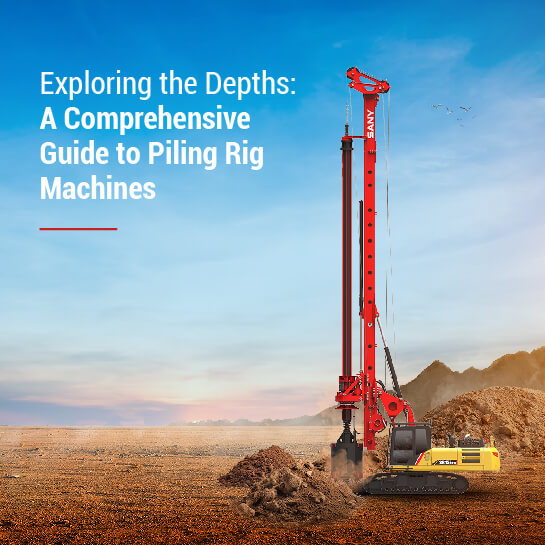In today’s world of advanced construction techniques, piling rigs are essential tools that lay the foundation for the stability and durability of buildings, bridges, and other critical infrastructure. Understanding the nuances of piling rigs is vital for ensuring the safety, efficiency, and sustainability of any construction project. By mastering the operations, techniques, and best practices associated with these machines, engineers and contractors can optimize their foundation work, mitigate risks, and achieve successful project outcomes. This comprehensive guide delves into the intricate details of piling rigs, covering their types, functionalities, machinery, and significant role in contemporary construction practices. Piling rigs are specialized construction machines designed to install piles—long, slender structural elements that are driven into the ground to provide support and stability for various structures. Equipped with powerful hydraulic systems and various attachments, these rigs efficiently drive, extract, and bore piles into the earth. Known as "piling rig machines," they play a crucial role in the foundation work necessary for the structural integrity of buildings and other constructions. There are multiple types of piling rigs, each suited to specific construction needs and soil conditions: Piling rigs perform a variety of critical functions in construction projects: Pile Installation: These rigs drive or bore piles into the ground to provide structural support and stability for buildings, bridges, roads, and other infrastructure projects. Foundation Preparation: They create stable foundations by installing piles at specified depths and spacings to bear the weight of structures and distribute loads evenly. Soil Testing: Piling rigs conduct soil investigations and tests to evaluate ground conditions, assess load-bearing capacities, and refine pile designs and installation methods. Load Testing: Load tests are performed on piles to verify their capacity and performance under varying load conditions, ensuring structural integrity and safety. Environmental Protection: Piling rigs minimize environmental impact by using eco-friendly drilling fluids, implementing sustainable construction practices, and adhering to regulatory guidelines for soil and groundwater protection. Piling rigs are complex machines made up of several key components and attachments: Piling rigs are integral to modern construction practices, offering dependable and efficient foundation solutions for a wide array of structures. Their contributions to construction projects include: In the ever-changing landscape of modern construction, piling rigs serve as indispensable tools, driving innovation and efficiency in foundation work. From driving piles deep into the ground to creating stable foundations for towering structures, these versatile machines play a pivotal role in shaping the built environment and ensuring the longevity and resilience of infrastructure projects. As construction practices continue to evolve and face new challenges, the importance of piling rigs remains unwavering, offering reliable solutions for the complex task of laying the groundwork for a sustainable future. Looking for a pile drilling machine for your project? Consider us your trusted partner. Sany India is a reputable manufacturer of piling rigs in India, offering a wide range of pile rigs, with stroke lengths ranging from 3000 mm to 6000 mm. Our pile drilling machines can reach a maximum drilling depth of 94/61 meters. With over 21 years of experience in construction machinery and equipment manufacturing, we have built an extensive network of around 42 dealers and 260 touchpoints across India. Customized Racking,Metal Shelf,Metal Steel Wire Shelves,Wire Shelves Suzhou Aomeijia Metalic Products Co,Ltd. , https://www.amjshelf.com
What Exactly Are Piling Rigs?
Different Types of Piling Rigs
Key Functions of Piling Rigs
What Kind of Machines Are Used for Piling Rigs?
How Do Piling Rigs Contribute to Modern Construction Practices?
Conclusion